SENEGAL
Economy

Economy
Economy
General
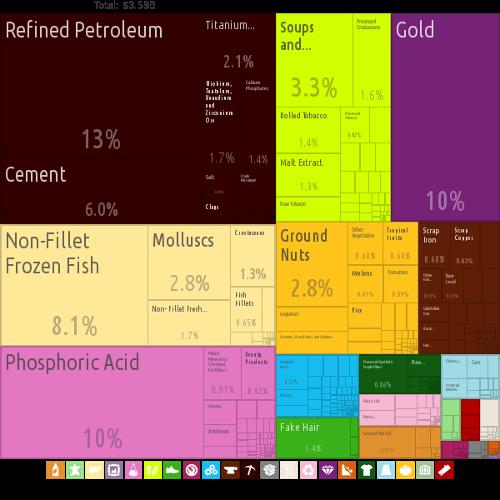 Export SenegalPhoto: Alexander Simoes, Cesar Hidalgo, et. al CC 3.0 Unported no changes
Export SenegalPhoto: Alexander Simoes, Cesar Hidalgo, et. al CC 3.0 Unported no changes
The economy of the developing country Senegal is among the weakest in the world. The main source of income at the moment is oil and fishing, followed by the cultivation of peanuts and the extraction of phosphate. The economy is therefore highly dependent on climate fluctuations and prices on the world market. Tourism is becoming increasingly important. Development money and money from Senegalese who work abroad also provide a lot of income. Agriculture may be the largest employer, but it does not bring in so much foreign money in proportion. Dangers to the Senegalese economy lie in the bureaucracy, the still great French influence, the many low-skilled people, few natural resources, corruption and an inadequate electricity grid.
Total exports were $ 2.3 billion dollars in 2017. Total imports were $ 5.2 billion in 2017. The main trading partners are France, other EU countries, Nigeria, Ivory Coast, Japan, Spain and the United States. The Gambia and Mali play an important role for 'informal trade'. The informal sector is becoming increasingly important for the individual citizen due to the increasing unemployment, almost 50% of the population. It is often the only chance to make some money. Many young men go to other African countries or to Europe to make a living there. Child labor is still a very common phenomenon.
Electricity is generated with imported fuels. In cooperation with Mali, Senegal is building hydropower plants in the Senegal River.
The GDP in Senegal is around $ 3,500 per year per capita (2017).
Agriculture and animal husbandry
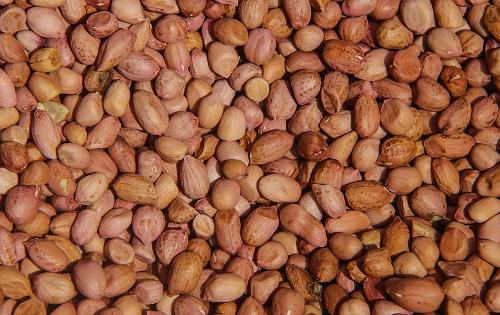 Peanuts SenegalPhoto: Peter van der Sluijs CC 4.0 International no changes made
Peanuts SenegalPhoto: Peter van der Sluijs CC 4.0 International no changes made
Agriculture suffers greatly from the lack of water, the heat and the nutrient-poor soil. Hence, only about 15% of the land area is used for agriculture and horticulture. About one third of the agricultural area is used for the cultivation of peanuts. Senegal is Africa's largest producer of this fruit. However, the cultivation of peanuts has not been going so well in recent years. Some domestic problems are the ever-shifting rain limit and the advancing desert, and the monoculture, which means that land is being exploited. Competition from abroad is also leading to a sharp decline in exports and plummeting prices. Yet about 1 million people are still dependent on peanut cultivation.
A lot of sugar cane is grown in the north of Senegal, which is however wholly owned by a French company.
Other products grown for trade are rice and cotton.
Fruit growing, especially in the Casamance, offers many possibilities. Conditions are that the quality, transport and preservation must improve.
For its own food needs, cassava, maize, millet, long beans and rice are grown.
Livestock farming as an economic product is not much. The millions of goats and cattle are kept for personal use only. It is mainly the Fula nomads who do this work.
Fisherie
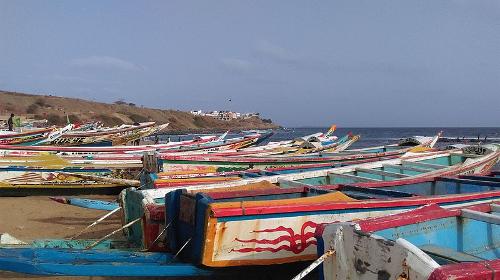 Fishing boats, SenegalPhoto: Pshegubj CC 4.0 International no changes made
Fishing boats, SenegalPhoto: Pshegubj CC 4.0 International no changes made
Fishing is increasingly important to Senegal. Most foreign money comes in through fishing and half a million people (including many women) work in this sector. The fishing grounds off the West African coast are among the richest in the world. Mainly sardines, tuna and shellfish are caught. The sale of fishing rights to foreign fishing vessels generates extra money. There is a great danger that so much is being fished by foreigners that there is a threat of overfishing.
Mining and industry
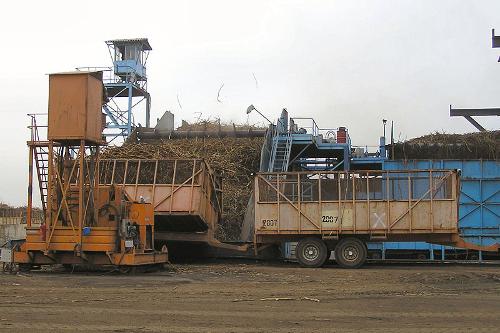 Sugar factory, SenegalPhoto: Manu25 CC 4.0 International no changes made
Sugar factory, SenegalPhoto: Manu25 CC 4.0 International no changes made
Senegal does not have many natural resources. Lime and phosphate are extracted for export. Phosphate in particular makes an important contribution to exports. Salt is extracted north of Dakar. Iron ore and some gold are mined in the east of the country.
In 1996 natural gas was found in the area of Thiès and there are several places where oil is politicized.
Industry can only be found around Dakar; refining peanuts into oil, slaughterhouses, fish processing industry, a beer brewery and a large cement factory. Printers, construction companies, weaving mills, furniture makers, car workshops and blacksmiths work for the local market only.
Traffic
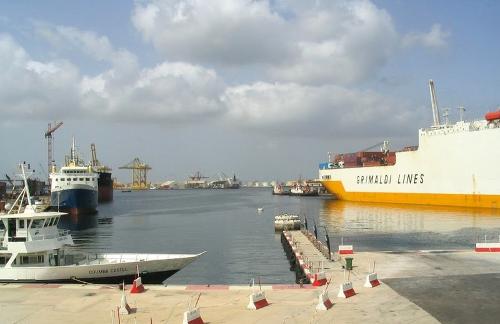 Port of Dakar, SenegalPhoto: Benoît Prieur CC 3.0 Unported no changes made
Port of Dakar, SenegalPhoto: Benoît Prieur CC 3.0 Unported no changes made
Dakar has a well-equipped, modern port that is served by most shipping companies. Millions of tons of goods are converted every year and the vast majority of Senegalese exports go through the port of Dakar. After the port of Abidjan (Ivory Coast) it is the largest in West Africa. It is the loading and unloading port for Mali, Mauritania and Guinea-Bissau. Inland shipping is not much.
Two railway lines run through Senegal, from Dakar to St. Louis and from Dakar to Barmako in Mali. Passenger and freight trains run only a few times a week.
Dakar Airport is Senegal's main airport. Air Sénégal International operates domestic flights only, calling at the airports of St. Louis, Ziguinchor and Cap Skirring.
The road network is extensive and well maintained by African standards.
Sources
Derksen, G. / Gambia, Senegal
Gottmer
Dirkx, J. / Reishandboek Senegal
Elmar
Else, D. / The Gambia and Senegal
Lonely Planet
Gambia en Senegal
Cambium
Hesseling, G. / Senegal/Gambia : mensen, politiek, economie, cultuur
Koninklijk Instituut voor de Tropen
CIA - World Factbook
BBC - Country Profiles
Copyright: Team The World of Info